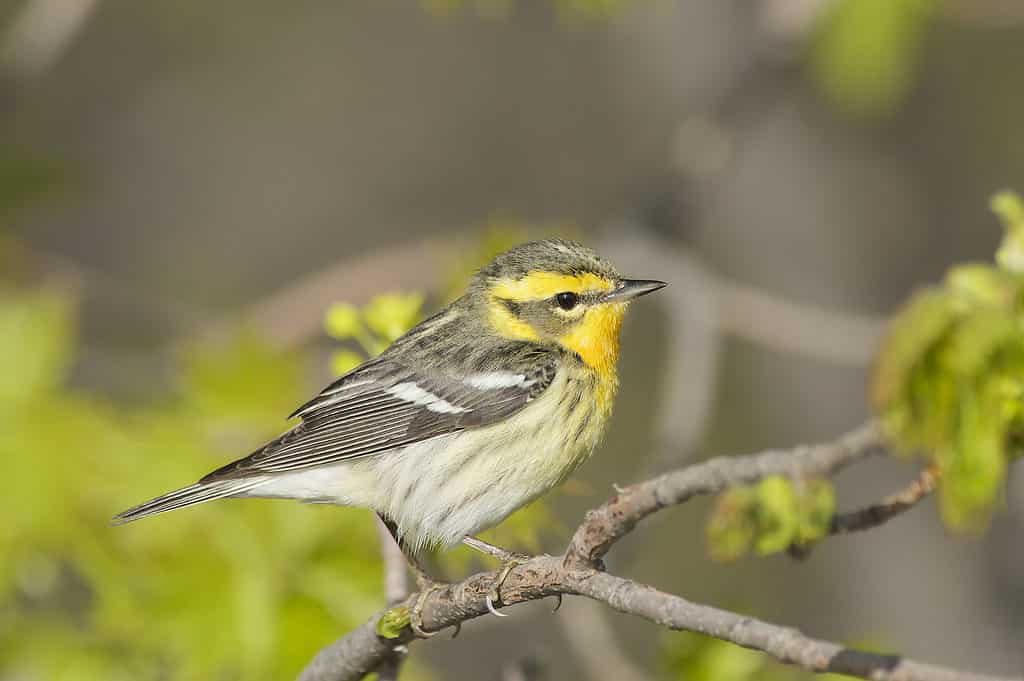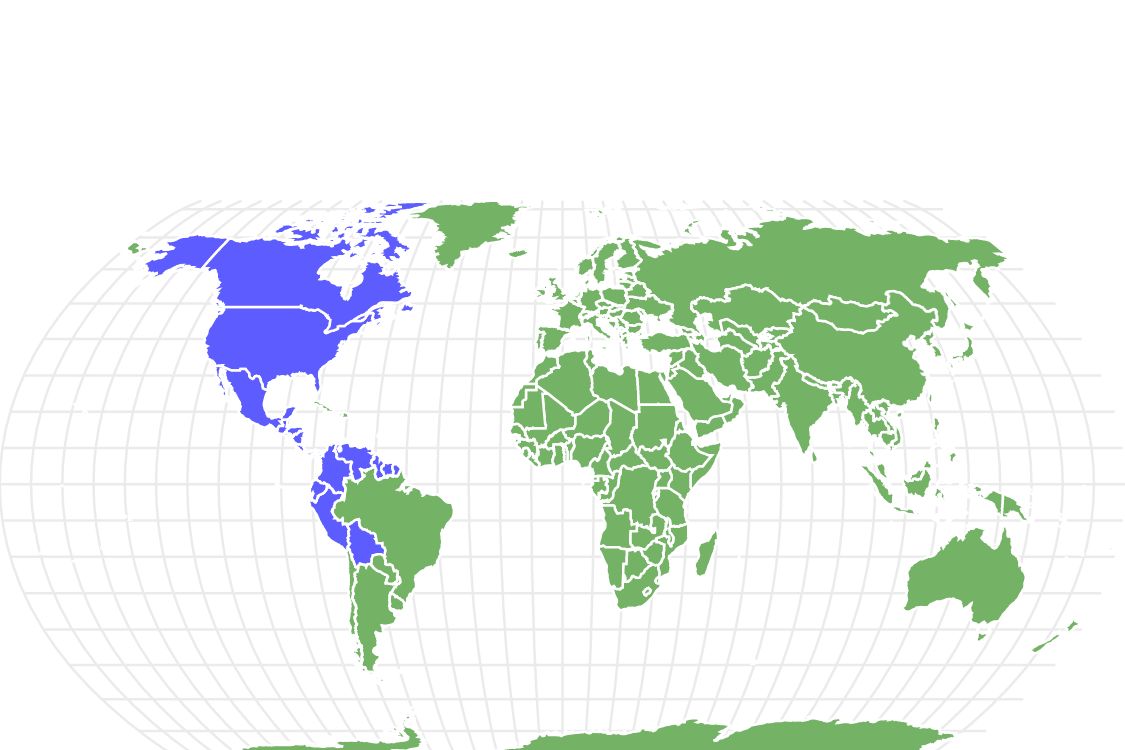Blackburnian Warbler
Setophaga fusca
They are the only songbird in North America with an orange throat!
Advertisement
Blackburnian Warbler Scientific Classification
- Kingdom
- Animalia
- Phylum
- Chordata
- Class
- Aves
- Order
- Passeriformes
- Family
- Parulidae
- Genus
- Setophaga
- Scientific Name
- Setophaga fusca
Read our Complete Guide to Classification of Animals.
Blackburnian Warbler Conservation Status
Blackburnian Warbler Facts
- Prey
- insects, spiders
- Main Prey
- insects
- Name Of Young
- hatchlings, fledglings
- Group Behavior
- Mainly solitary
- Solitary except during mating season
- Fun Fact
- They are the only songbird in North America with an orange throat!
- Estimated Population Size
- 14 million
- Biggest Threat
- Deforestation
- Most Distinctive Feature
- Orange throat
- Age Of Independence
- 2 to 3 months
- Habitat
- Dense, tall forests
- Predators
- Birds of prey, squirrels
- Diet
- Omnivore
- Average Clutch Size
- 4
- Nesting Location
- The tops of tall trees
- Migratory
- 1
View all of the Blackburnian Warbler images!
Blackburnian Warbler Summary
“Blackburnian warblers are the only songbird in all of North America with an orange throat!”
The blackburnian warbler is a common songbird found in the western hemisphere, especially in North America. Although it is rarely seen in Europe, there have been sightings along the west coast. Despite being found mostly only in the Americas, the blackburnian warbler was named after Anna Blackburne, an English botanist. The name of the genus, Setophaga, comes from the Ancient Greek words ses, “moth”, and phagos, “eating.
Blackburnian Warbler Amazing Facts
- They’re the only songbird in North America with an orange throat.
- Males are highly territorial and will chase each other through the forests.
- As blackburnian warblers get older, they may forage in groups of other species of birds.
Where To Find Blackburnian Warbler
The blackburnian warbler is a highly migratory bird. This means that there are no year-round populations anywhere in the western hemisphere they call home. Instead, they will spend their breeding season in the northern region of the United States and the southern region of Canada. During their non-breeding season in the cooler months of the year, they migrate into South America, where they can be found in almost every northern country except for Brazil.
Outside of these areas, the best area and time to find the blackburnian warbler is in the migratory period. Here, you will be able to see them in Central America as well as in the midwestern and eastern United States as they make their way either north or south.
Blackburnian Warbler Nests
There’s not actually a lot known about the blackburnian warbler nests. While this is in part due to their migratory behavior, it is mostly because of their nesting habitats. The blackburnian warbler prefers to nest in dense, secluded forests on the tops of high trees. This can make it difficult to observe their nesting behaviors in the wild.
What is known about their nests, however, is the overall shape and material. They have cup-shaped nests towards the ends of branches that are constructed out of twigs, branches, and similar materials. The insides are lined with softer materials, such as moss, grass, and pine needles. It is suspected that females build the nests.
Blackburnian Warbler Scientific Name
The blackburnian warbler has the scientific name of Setophaga fusca. Their genus name is of Greek origin, while their species name is Latin for “brown”. Its class is Aves, and its family is Parulidae.
Blackburnian Warbler Size, Appearance & Behavior

Female blackburnian warblers build the nests, and they are the main ones responsible for incubating the eggs.
©pcnorth/Shutterstock.com
The blackburnian warbler, like other similar songbirds, is a small, thin bird. They can grow to be anywhere from 4.3 to 4.7 inches long, and they can weigh as little as 0.3 to 0.4 ounces. Their wingspan ranges from 7.9 to 9.1 inches, making it around double their length.
As far as coloration and appearance go, it can be hard to miss these striking birds when they come into view. Males have a black and white body. Their face and neck are a brilliant, bright orange with black markings. Females tend to have more of a brown or tawny coloration along their body, with a yellow head and no markings. Juveniles, including males, resemble females before maturing.
Blackburnian Warbler Migration Pattern and Timing
One of the main things that blackburnian warblers are known for, other than their bright colors, is their migratory patterns. Blackburnian warblers have no year-round populations. During their breeding seasons in the warmer months, they can be found in the northeastern region of the United States and the southeastern region of Canada. During migration, they can be seen along the midwestern and eastern United States as well as in Central America. Then, during the cooler months of non-breeding, they can be spotted in South America.
Blackburnian Warbler Diet
This small bird is almost entirely insectivorous, which means it eats mostly insects. However, what prevents the blackburnian warbler from being entirely insectivorous is that they may also supplement their diet with berries as needed and desired. This is most common in the wintertime.
Their diet is one reason that it is not common to see blackburnian warblers at or around bird feeders with other types of passerines. Rather than the seeds that are typically common at bird feeders, the blackburnian warbler is more drawn to high protein food such as mealworms, since they have carnivorous tendencies.
What does the blackburnian warbler eat?
During their breeding months in the summer in the north, blackburnian warblers will mainly focus on insects. One of the largest components of their diet during this time is the larvae of moths and butterflies. There was one study that found that 98 percent of the blackburnian warbler’s breeding diet consisted of insects, with the rest consisting of spiders.
As mentioned above, during their winter months in the south, blackburnian warblers may eat berries when available.
Blackburnian Warbler Predators and Threats
Whether as adults or as eggs, there are many different types of animals that prey on the blackburnian warbler. This includes large birds of prey and even some types of mammals.
However, these aren’t the only threats to the blackburnian warblers.
Like many other types of passerine, the blackburnian warbler has been greatly impacted by habitat loss. This is especially true in their breeding territory, where they rely on certain types of forests to create their nests and raise their young.
What eats the blackburnian warbler?
As mentioned above, both large birds of prey and mammals. This can include bluejays, squirrels, sharp-shinned hawks, and Cooper’s hawks.
Blackburnian Warbler Reproduction, Babies, and Lifespan
Both the male and female offer a brief courtship display when it comes time to mate in the warmer months of their breeding season. Females will crouch and display their wings and tails with small, fluttering motions. Males, however, will take to the skies with an ariel courtship display. As passerines, they can also use songs to find their perfect mate.
A single brood can consist of anywhere from 3 to 5 eggs. These eggs are light greenish or white and can have brown markings on them.
Female blackburnian warblers build the nests, and they are the main ones responsible for incubating the eggs. Both parents will take part in raising the hatchlings, from feeding to teaching them to fly later on.
The oldest blackburnian warbler was around 8 years old. It is more typical to see them live to be anywhere from 3 to 6 years old, however. Hatchlings remain in the nest for around 2 to 4 weeks. They then become independent from their parents in around 2 to 3 months. Despite this, however, they will not reach maturity until around one year of age.
Blackburnian Warbler Population
Despite the threats that they may face, the blackburnian warbler is listed as a species of list concern. They have an estimated global population of 14 million. However, while they may be thriving globally, local populations or populations in certain areas may be declining due to humans and natural threats.
The blackburnian warbler population is most at-risk in their breeding areas in Canada. These small songbirds have a highly specific area that they choose to breed and live in. They require tall, dense forests with high levels of privacy. As these forests continue to disappear to make room for urbanization and other reasons, it becomes more difficult for blackburnian warblers to find the resources necessary to breed and lay eggs. This as a result can begin to wear away at the population over time, especially since it can take a year or two after a successful brood for more adults to emerge and continue to grow the population.
Similar Animals to the Blackburnian Warbler
View all 285 animals that start with BBlackburnian Warbler FAQs (Frequently Asked Questions)
Do blackburnian warblers migrate?
Yes, they do migrate. In the cooler winter months, they live in South America. During their transitionary periods, they can be found in Central America and the United States. Lastly, in the breeding season, they settle in Canada and the northernmost United States.
How many eggs does the blackburnian warbler lay?
The blackburnian warbler lays anywhere from 3 to 5 eggs.
How fast does the blackburnian warbler fly?
It can be difficult to gauge exactly how fast or slow the blackburnian warbler is. However, in some instances, they’re so slow that they only travel 25 miles in an entire day.
What is the blackburnian warbler's wingspan?
The blackburnian warbler has a wingspan of 7.9 to 8.7 inches.
When do blackburnian warblers leave the nest?
Blackburnian warblers begin leaving the nest around 2 to 4 weeks old. They become fully independent at 2 to 3 months old.
Thank you for reading! Have some feedback for us? Contact the AZ Animals editorial team.
Sources
- Dana Paul Synder, Available here: https://sora.unm.edu/sites/default/files/journals/condor/v052n01/p0017-p0027.pdf
- (1970)

















